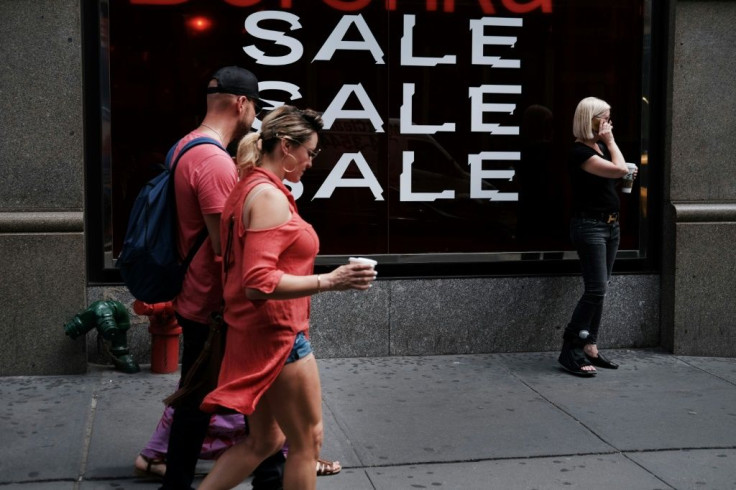US growth revised down slightly in Q2, bolstered by consumer spending

America's economy grew more slowly in the second quarter than previously thought but a bump in consumer spending helped offset other eye-catching weaknesses, according to new data released Thursday.
The revised figures confirmed the slowdown from the start of the year -- with far weaker housing, oil exports, tourism and local government spending.
It also underscored the challenges facing President Donald Trump, who is touting his economic policies as he seeks reelection while prosecuting a grinding trade war with China.
GDP expanded 2.0 percent in the April-June period, down a notch from the initial 2.1 percent growth estimate reported last month, and well below Trump's three percent target, according to the Commerce Department report.
Recession indicators in recent weeks have begun to flash warning signs, and though the American economy is still outpacing the rest of the industrialized world, it has begun to sputter worryingly in some areas.
Consumer spending remains robust and corporate profits rose in the second quarter, after falling at the start of the year, but business investment is floundering, according to the report.
And the China trade war could darken the picture in the third quarter as several companies warned in their earnings reports on Thursday that Trump's latest round of China tariffs were a threat to profits, echoing urgent pleas from several industry groups.
Clothing retailer Abercrombie & Fitch said two coming waves of tariffs should wipe out about $6 million in profit in the fall shopping season.
RDQ Economics said the latest GDP numbers were "the proverbial mixed bag."
"The domestic economy appears to be fairly strong but the mix of growth between consumer and investment spending is not healthy from a supply-side perspective with investment spending stalled out," the firm said.
While largely confirming economists' expectations, the revised second quarter GDP numbers nevertheless marked a sharp slowdown from the heady pace of growth at the start of the year.
Unemployment remains low but hiring has slowed in 2019 and business investment has dropped sharply while the manufacturing sector already is in recession.
Slipping in the polls
Investors have become increasingly worried a slowdown in the rest of the world and the Brexit turmoil will spill over into the US economy, already stressed by Trump's trade conflict with China.
But a solid bump in consumer spending -- on health care and retail goods -- provided a dose of good news but confirmed the growing divide between consumers and businesses.
While investment in structures was its weakest in more than three years, private consumption of non-durable goods was the strongest since 2003.
Companies have sharply curtailed investment in new factories as the China trade war has shaken their confidence, disrupting supply chains and raising prices.
Tourism and travel was another sore spot, as falling revenues from foreign visitors helped shave a half percentage point off growth in services exports, hitting hotels, restaurants and tourist attractions.
Trump has by turns denied that the US economy is weakening or sought to blame the Federal Reserve for failing to cut interest rates fast enough.
A real estate magnate, he campaigned on his ability to bring an outsider's flair to reigniting job creation and investment. So signs growth is faltering could jeopardize his chance of winning a second term in next year's elections.
A Quinnipiac University poll released Wednesday found registered voters now disapprove of Trump's handling of the economy by a slim margin.
Economists worry that with interest rates already very low, the Fed may have little room to maneuver should a recession arrive, while a divided Congress and soaring deficits may make enacting fresh fiscal stimulus unlikely at best.
Oxford Economics said Thursday recent tariff increases announced by Trump could cost the US economy about 0.5 percentage points in GDP growth next year -- something the International Monetary Fund also warned is a risk of continuing the trade war.
Wall Street was largely unmoved by the new GDP numbers, with the Dow surging more than 300 points on renewed hopes the US-China trade war could be cooling down.
© Copyright AFP 2024. All rights reserved.





















